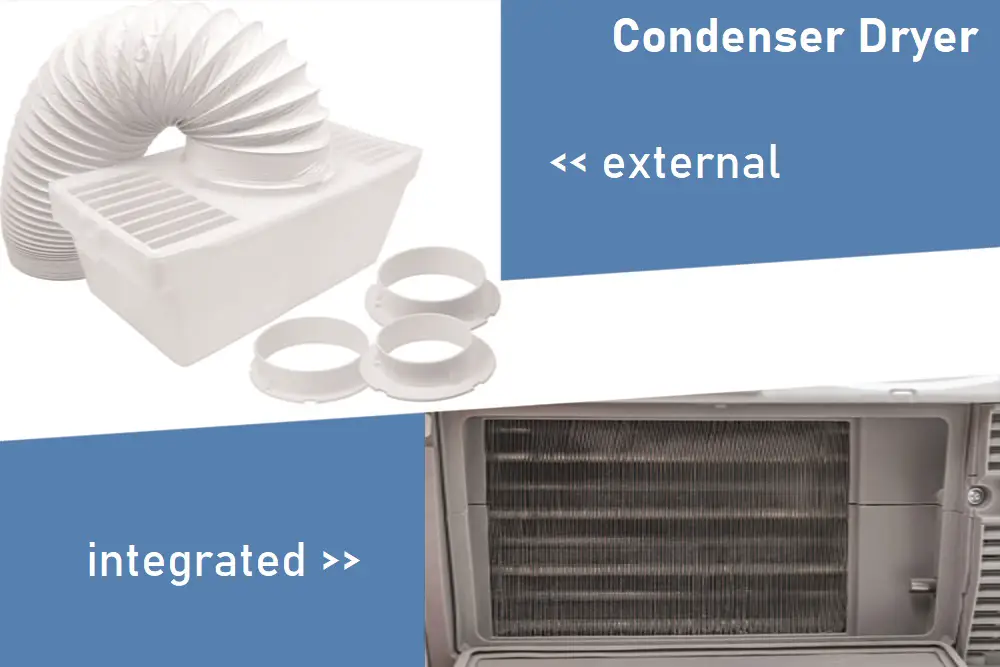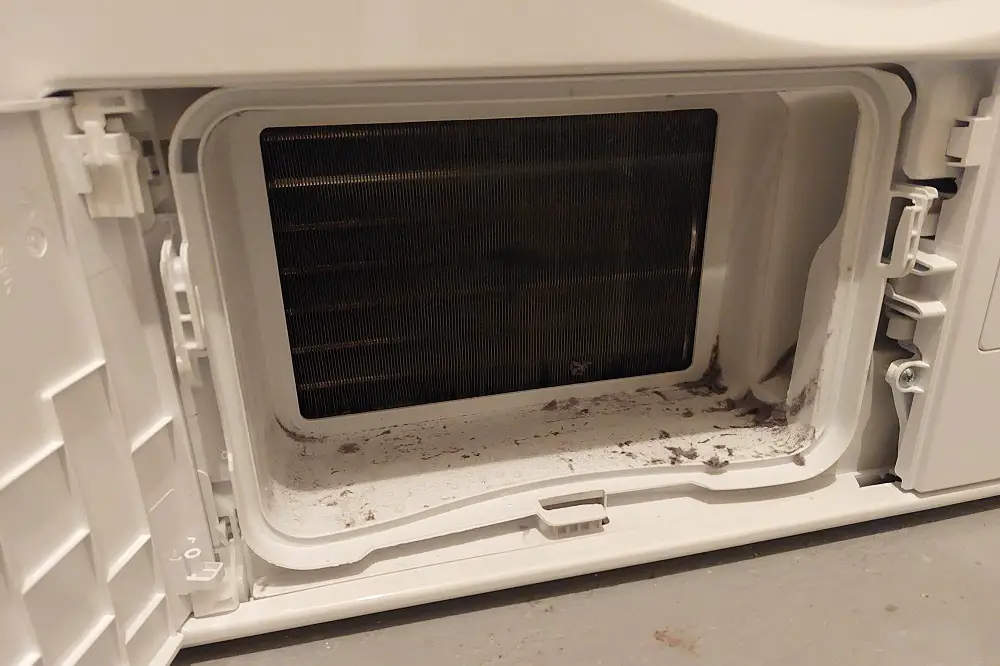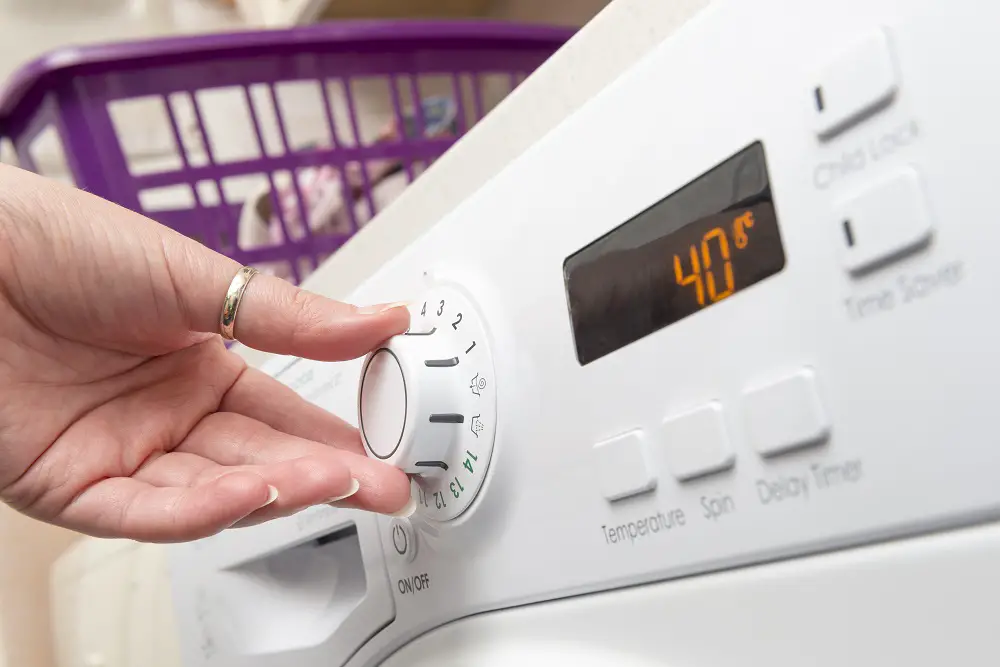One common question that arises when it comes to shoe care is whether or not trainers can be tumble dried.
Trainers are typically made of various materials, and finding the best way to dry them without causing damage can be a challenge.
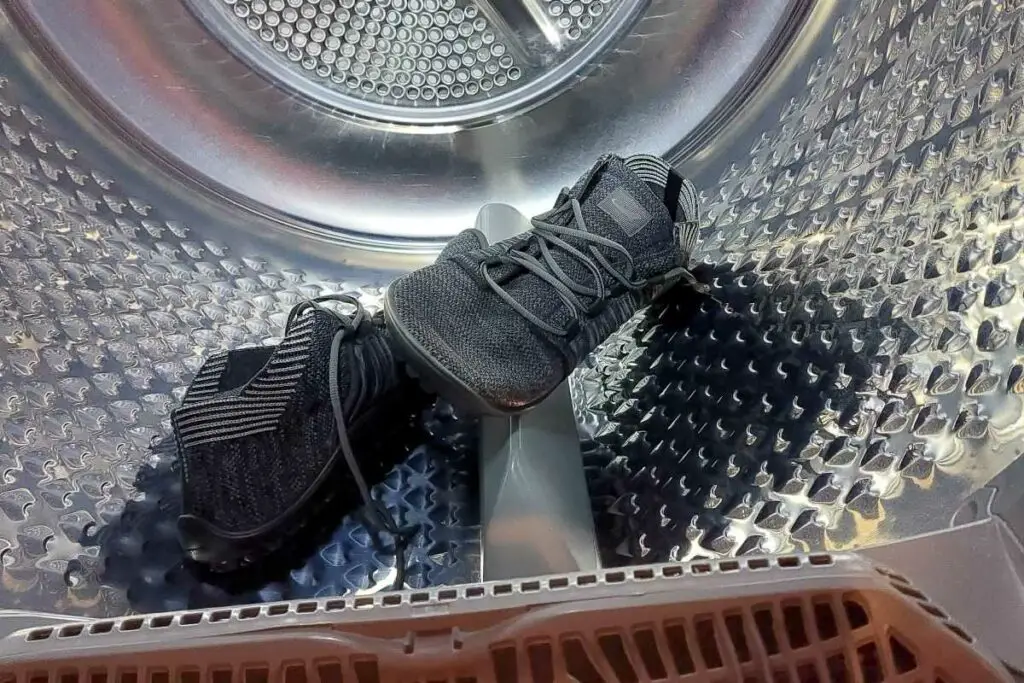
With the many different types of trainers available on the market and the multitude of materials they are made from, the answer to this question isn’t always a simple yes or no and needs more details.
Considering the adverse effects of tumble drying on certain materials, it’s crucial to understand the best drying methods for different trainer types to avoid potential damage and preserve their longevity.
Table of Contents
Can You Tumble Dry Trainers?
Tumble drying trainers is a topic of debate for many people (us included), as there are various factors to consider before making a decision.
The type of material used in the construction of trainers plays a significant role in determining whether they can be safely tumble-dried.
While it is possible to tumble dry some trainers made from fabric materials such as cotton, canvas, nylon, or polyester, there are risks involved. The heat from the dryer may cause the trainers to shrink, altering their shape and fit, which can be detrimental to the performance of the shoes.
Leather trainers, on the other hand, should not be placed in a tumble dryer.
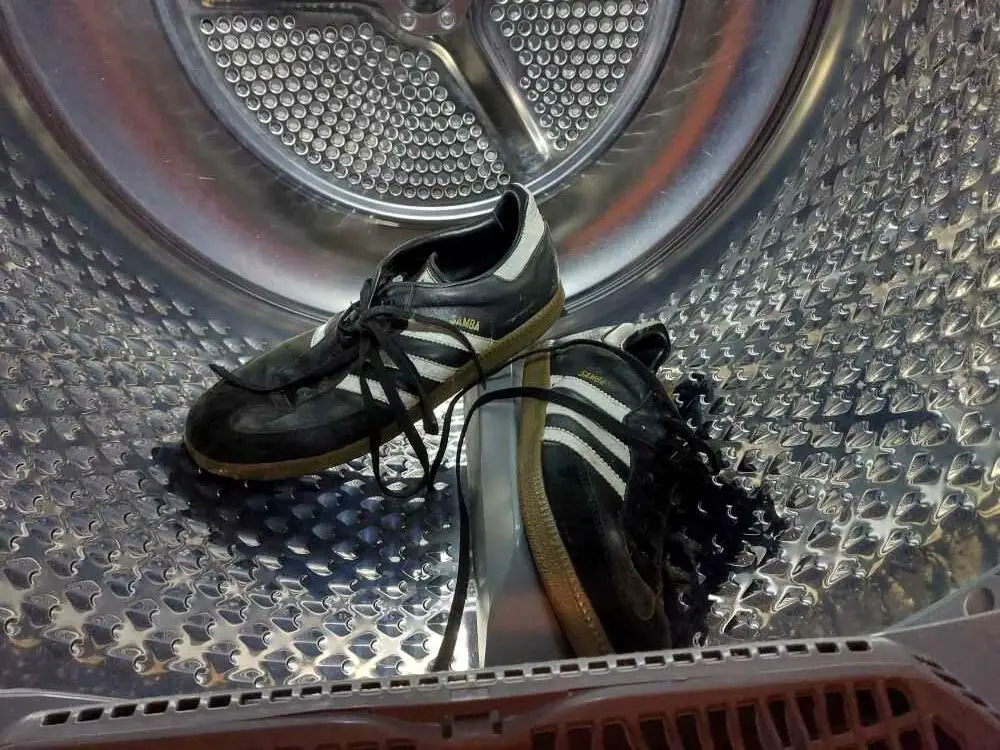
Exposing leather shoes to high heat can cause them to crack, warp, and lose their shape, as well as their overall quality.
When tumble-drying, it is essential to follow precautionary measures to reduce the risk of any damage.
One method involves using a drying rack to prevent the trainers from moving around inside the dryer or even jamming the laces in the dryer door to prevent the shoes from banging on the drum.
However, some sites advise against tumble-drying trainers and suggest alternative methods for drying them, such as air-drying in a well-ventilated area or using newspapers or uncooked rice to absorb moisture.
While this is a safe option in every case, we cannot agree. We do tumble dry our trainers for years and have never had any problem.
No shrinkage, no damage, nothing.
Follow some easy and basic rules and you’ll be happy to have your shoes tumble-dried without risk.
Factors to Consider
When it comes to tumble-drying trainers, there are several factors to consider to ensure the best results and to avoid any damage to your shoes.
Material Types
Different material types found in trainers, such as leather, suede, cotton, canvas, synthetic materials, and polyester, react differently to heat and tumble drying.
For example, leather and suede trainers are more sensitive to heat and may be damaged if exposed to high temperatures in a tumble dryer.
On the other hand, cotton and canvas shoes may be more suitable for tumble drying, although some basic caution is still necessary.
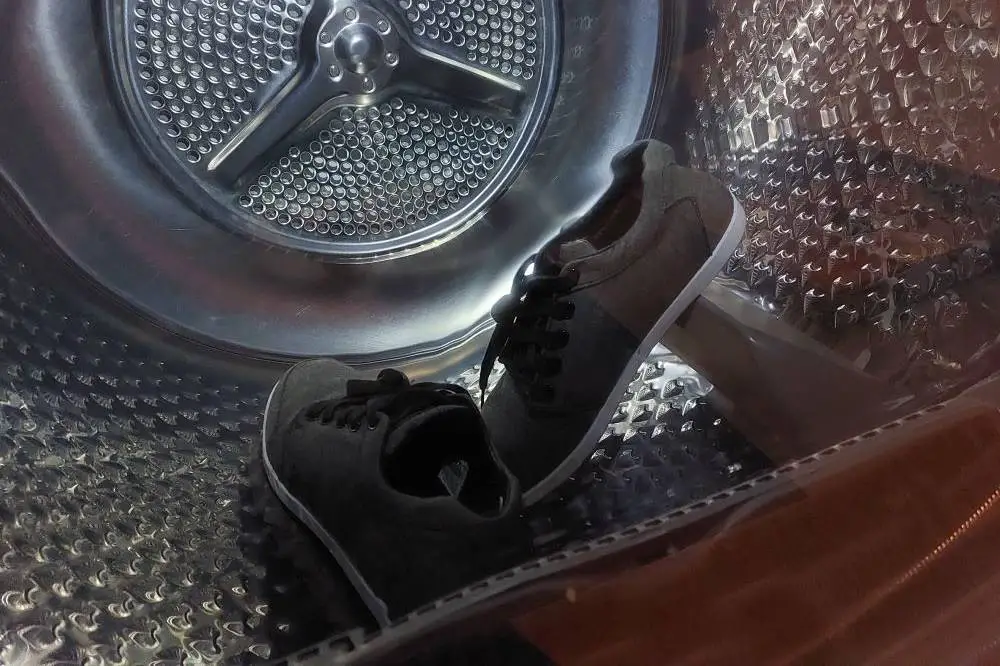
Synthetic materials and polyester found in some trainers can also affect how well they fare in a tumble dryer.
It is essential to know the specific materials used in your trainers to make an informed decision regarding tumble drying.
Heat and Temperature
Heat plays a critical role in the tumble-drying process, and it is vital to ensure you are using the appropriate temperature settings for your trainers.
Using a tumble dryer at high temperatures may cause some trainers to shrink or warp their structure.
Furthermore, excessive heat can affect the adhesive or glue used to keep the shoes together, causing them to fall apart or lose their shape.
We recommend using a low heat setting as we have done it for years.
Keep these factors in mind when deciding whether or not to tumble dry your trainers. Each shoe type and material varies, so it is important to pay attention to care labels and manufacturer recommendations to protect your trainers and ensure their longevity.
Drying Methods
Tumble Dryers and Clothes Dryers
One option for drying trainers is using a tumble dryer or clothes dryer. Many dryers come with a drying rack for delicate items and shoes.
After spinning your trainers in the washing machine to get rid of most of the water, place them inside the drying rack and select the correct cycle (we explained ALL Tumble Dryer Settings).
Again: It is essential to use low heat settings to avoid damaging your trainers.
Air Drying and Natural Drying
Air drying is safe but slow when drying trainers.
To enhance the process, remove the insoles and laces, and let them dry separately.
Ensure that the trainers are set in a well-ventilated spot to assist with drying.
You can also try using a mesh laundry bag for hanging your shoes in a well-ventilated area.
Fans and Fan Heaters
Another method to speed up drying is using fans or fan heaters.
Place the trainers near a fan or point the fan at the shoes to circulate air around.
You can also use a fan heater to provide more concentrated heat while maintaining enough distance to prevent damage.
Newspapers and Paper Towels
Using newspapers or paper towels is a popular way to absorb moisture from trainers.
Remove the laces and insoles, stuff the trainers with newspaper or paper towels, and replace them regularly as they soak up moisture.
This method typically takes 12 hours or can be left overnight.
I personally don’t like putting newspapers into my shoes. Especially because I do read my news online and rarely do have enough material.
Sunlight and Well-Ventilated Spots
Utilizing sunlight and well-ventilated spots is also possible for drying trainers.
Placing your shoes in direct sunlight and a well-ventilated area helps to evaporate moisture faster. Ensure to open up the trainers, remove the laces and insoles, and keep them in a dry, airy spot until fully dried.
Drying Time and Temperature
Drying trainers in a tumble dryer is possible, but it is essential to consider the temperature and drying time to avoid damaging the shoes.
Typically, trainers are made of materials such as fabric, mesh, and synthetic materials, which require specific care when drying. We (again) advise using a low heat setting or air-dry cycle on the tumble dryer to minimize the risk of damage.
Another important aspect is the drying time. The actual duration needed to dry trainers efficiently depends on various factors, such as the shoes’ material and the dryer’s settings.
In some cases, it could take 1 or 2 hours, while in others, it could take overnight.
However, good ventilation is crucial for quicker drying times. You can speed up the process by removing the insoles and laces, allowing them to air dry separately.
It is also recommended to use a drying rack or to jam the laces in the dryer door to prevent damage to your dryer and reduce the noise caused by shoes banging inside the drum.
In summary, if you decide to tumble dry trainers, consider the temperature and drying time as essential factors to avoid damaging both the shoes and the dryer.
Utilizing a low heat setting or air-dry cycle, providing proper ventilation, and removing the insoles and laces can contribute to an efficient and safe drying process.
Preventing Damage and Shrinkage
It’s essential to prevent damage and shrinking when trying to dry wet trainers. Following some simple steps can ensure the integrity of the shoes while speeding up the drying process.
First and foremost, it’s crucial to check the shoe’s label for any specific care instructions. The label may provide valuable information on the shoe’s materials and safe drying methods. This could prevent irreversible damage to the shoes.
Before attempting any drying method, remove the insoles from the wet shoes. Insoles can be air-dried separately or placed near a fan for faster drying.
Taking out the insoles prevents them from bunching up, which can cause discomfort when wearing the shoes later.
Additionally, it’s important to remove or loosen the laces from the trainers. Doing so helps to open up the shoe, allowing better airflow for quicker drying.
Combine this with a low heat setting to achieve the best and most secure result.
Possible Issues and Solutions
While tumble-drying trainers can be a quick way to dry them, it may come with potential issues such as causing blisters or promoting mold growth.
In this section, we will discuss these issues and provide effective solutions to mitigate these risks.
Blisters may form on your feet when wearing shoes that have been exposed to high heat during the tumble-drying process. This is because the heat can cause shoe materials to shrink or warp, leading to an uncomfortable fit.
To prevent blisters, it is advisable to avoid overdrying your trainers in the tumble dryer.
Stop the drying process when they are almost dry rather than bone dry. You can also use a fluffy sock method to prevent direct contact between trainers and the dryer, reducing damage to the shoe material.
Mold growth is another concern when tumble drying trainers, as excess moisture left inside the shoes can create a damp environment conducive to mold growth.
This issue can be addressed by ensuring proper drying techniques are used. One such technique is to use newspapers to effectively absorb moisture from your shoes.
Alternatively, you can use dry rice to absorb moisture and prevent mold growth. Make sure to leave the shoes in the rice for 2 to 3 hours for optimal results.
In cases where tumble drying is not an ideal option due to the risk of damaging the shoe materials or causing discomfort, consider alternative drying methods.
Our Opinion: Trainers Can Be Tumble-dried Safely
Putting your trainers in the tumble dryer can be a quick and convenient way to dry them, but it’s important to be aware of the risks involved.
As we described in our article, the type of material used in the construction of trainers plays a significant role in determining whether they can be safely tumble-dried.
While it is possible to tumble dry some trainers made from fabric materials such as cotton, canvas, nylon, or polyester, there are normal risks involved, such as shrinkage.
Leather trainers, on the other hand, should not be placed in a tumble dryer.
We provided different drying methods, such as tumble dryers, air drying, fans, and newspaper methods, and highlighted the importance of preventing damage and shrinking when trying to dry wet trainers.
We also addressed some possible issues when tumble-drying trainers, such as causing blisters or promoting mold growth, and provided effective solutions to mitigate these risks.
